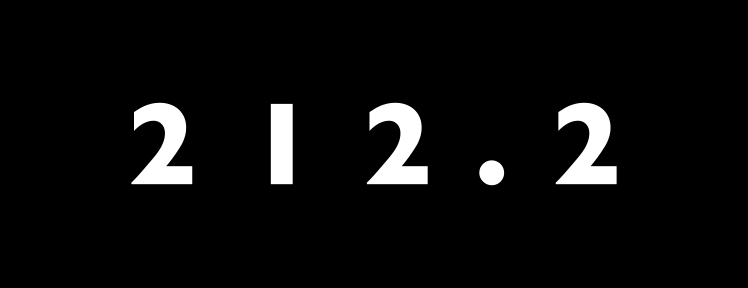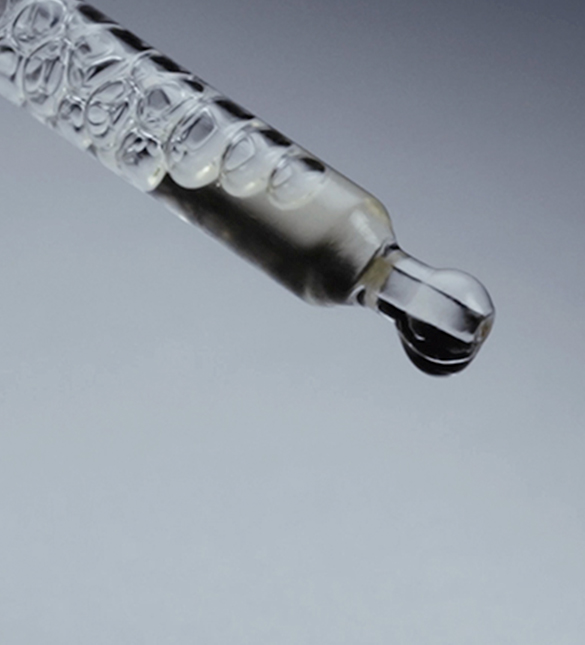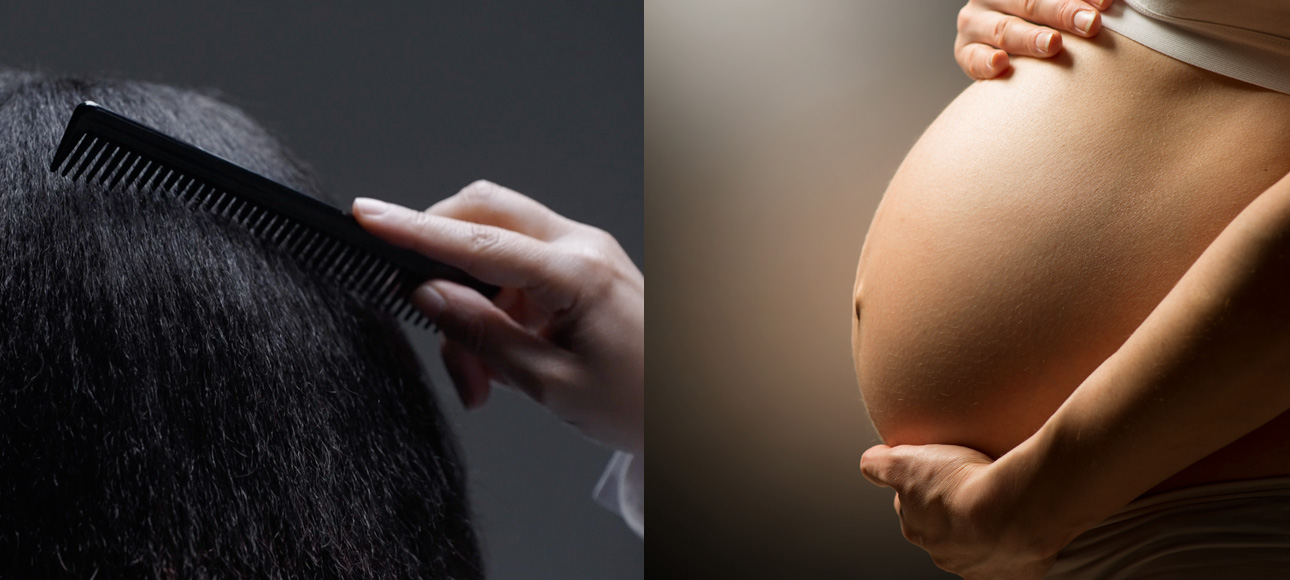
Hair loss after pregnancy is common, expected even, but that doesn’t make it any less irritating when it happens.
One day your hair is flourishing, and the next you’re noticing it everywhere but where it should be: on your head. For many women, the shedding kicks in around three months post birth. Hairlines thin, partings widen, and those baby hairs grown during pregnancy start falling by the handful.
Though temporary, the shift can be impactful, effecting confidence and mood. And while it’s rooted in hormonal changes, the right care can make all the difference to how the hair responds, regrows, and recovers.
According to trichologist Ricardo Vila Nova, postpartum hair loss is less a problem to be solved and more a process to be supported – one that involves the whole body, not just the scalp. From internal nutrition to scalp environment and everyday styling habits, read on to discover Vila Nova’s insights into how to create the right conditions for recovery and long-term regrowth.
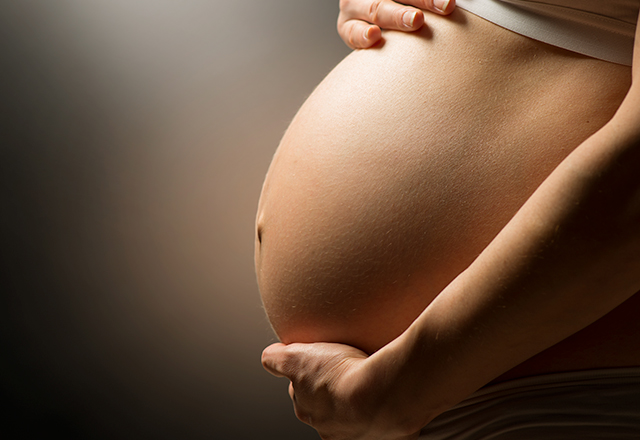
Postpartum hair loss explained
During pregnancy, oestrogen levels are elevated, keeping your hair in its growth phase (anagen) for longer than usual. Shedding virtually stops. This is why many women report having thicker, glossier, more manageable tresses while pregnant.
But once the baby arrives and hormones begin to recalibrate, the hair that was effectively ‘on pause’ starts to fall out, often all at once.
“The body sees childbirth as a major physiological stress. Afterwards, you get a sudden drop in oestrogen and progesterone, which pushes a large percentage of follicles into the shedding (telogen) phase. This is completely normal. But. what surprises women is the volume, it can feel extreme, because it’s delayed shedding happening all at once,” explains Vila Nova.
The temples, the parting, and the crown tend to show signs of loss first, and for those with Afro-textured or naturally fine hair, the thinning can be even more visible.
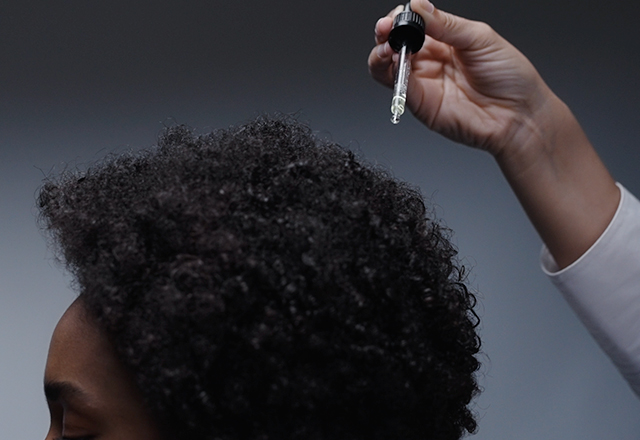
Not all hair loss is created equal
It’s worth pointing out: not every post-birth hair issue is down to hormones alone. “We often assume it’s just ‘baby hair loss,’ but there are usually other factors involved,” says Vila Nova. “Iron deficiency, low vitamin D, a sudden drop in calories, and poor sleep are common postpartum, and all impact the hair.”
The physical demands of recovery, combined with the nutrient drain of breastfeeding, often leave the body running on empty. And when that happens, hair is the first thing to suffer, “as it’s a non-essential from a biological standpoint,” explains Vila Nova. “The body will sacrifice it when nutrients run low. So, you need to ensure there’s enough fuel, not just for survival, but for regeneration.”
Protein is key. Vila Nova recommends including a quality source at every meal like eggs, fish, legumes, or lean meat, alongside iron-rich vegetables and healthy fats to aid absorption.
As for supplements, Vila Nova advises they should only be introduced if deficiencies have been confirmed. He recommends a Hair DNA Scan, which analyses a single strand of hair to uncover what’s really going on beneath the surface. From mineral imbalances and nutritional deficiencies to hormones and toxin exposure, it reveals the hidden triggers behind poor hair health, so treatments can be tailored from the inside out. He also recommends a blood test to check ferritin, B12, vitamin D and thyroid function. “There’s only so much treatments can do if your blood isn’t delivering nutrients to the follicles,” adds Vila Nova.
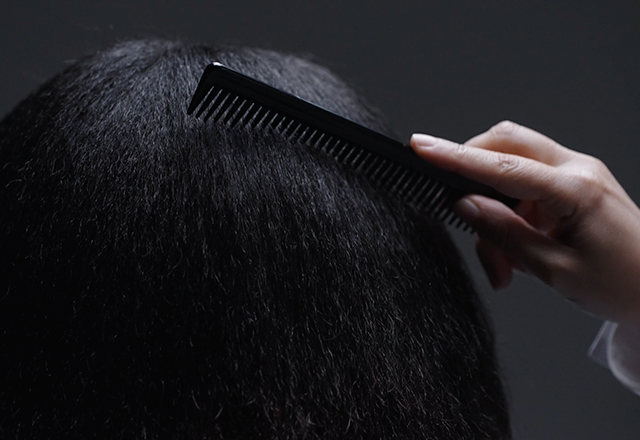
Scalp care
In the flurry of looking after a newborn, scalp health doesn’t usually make it onto the to-do list. But it should. A dry, inflamed, or congested scalp isn’t just uncomfortable, it’s a hostile environment for new growth.
“We often say hair starts at the roots, but it’s really the scalp that determines everything,” says Vila Nova. “It’s where the follicles live, and if that environment isn’t optimal – think inflammation, product buildup, or poor circulation – your hair with struggle.”
Investing in a gentle, sulphate-free shampoo, and an enzyme-based or clay exfoliant is a great start. “We want to keep the scalp clean, and stimulate it but without stressing it further,” reveals Vila Nova.
For targeted support, regenerative in-clinic treatments can help bridge the gap between shedding and regrowth. Biosomes deliver active ingredients deep into the scalp using advanced liposomal carriers, and are designed to repair and reawaken follicles. “They allow us to deliver peptides, amino acids, and minerals exactly where they’re needed. This is thanks to their ability to penetrate the epidermal barrier and reach the follicular root, which is essential when the scalp has been under hormonal stress or inflammation.”
While light therapy works on a cellular level, increasing oxygenation and encouraging ATP production within the follicle, and microneedling helps stimulate the scalp’s natural regenerative processes. “It creates microchannels that boost circulation and improve absorption of the personalised peptide, and vitamin tonics we like to apply to the scalp, which further help to encourage the scalp to start repairing itself,” Vila Nova explains.
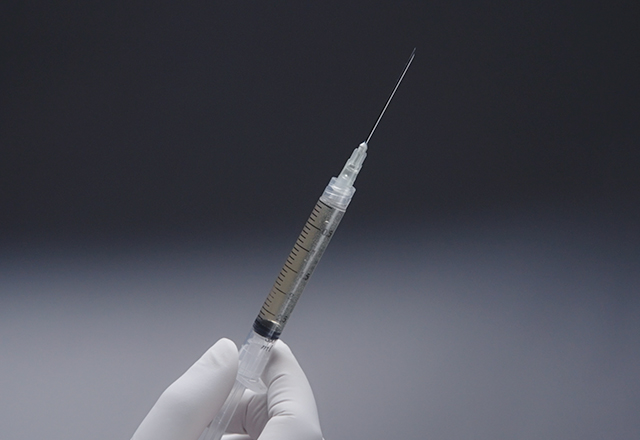
Handle with care
Targeted products and treatments have been shown to work wonders, but your daily styling practices need to be aligned with a healthy hair routine. So, this is not the time to use heat daily, or throw your hair up in a high, tight bun because it’s ‘convenient’. Postpartum strands are fragile, and they’re more prone to breakage – another element of postpartum hair loss that is less considered reveals Vila Nova. “Mechanical damage compounds hormonal loss,” says Vila Nova. “If the hair’s falling out and the rest is breaking, you create the illusion of even greater thinning.”
He suggests switching to silk pillowcases, using a microfibre towel to blot excess water post washing, and choosing hair styles that don’t pull on strands. And for curly, and textured hair types in particular, Vila Nova stresses the importance of focusing on moisture and strength by using hydrating leave-in products and implementing low-manipulation styling like twists or loose plaits.
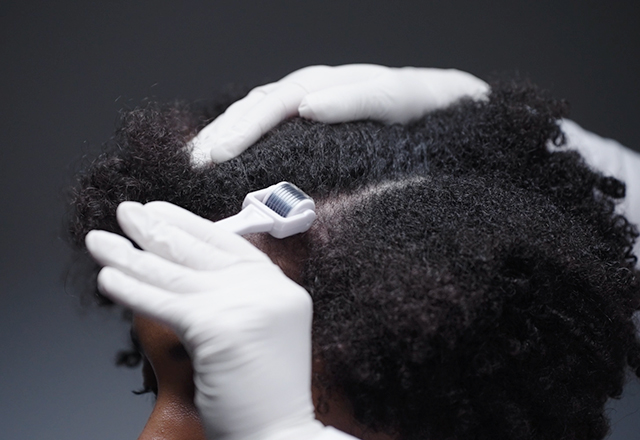
Postpartum hair loss isn’t inevitable
Though postpartum hair loss can be a difficult phase to navigate (especially as hair is so intrinsically linked to identity, which is often in flux after giving birth), it’s possible to avoid the condition entirely says Vila Nova, who has helped countless women do just that.
But how? PRP (platelet-rich plasma) treatments within the first three months after giving birth are Vila Nova’s go-to. “It’s something we educate all our clients on,” he explains. “When done early, PRP can significantly reduce shedding and delay the shift in the hair growth cycle, meaning your hair doesn’t fall below its pre-pregnancy baseline.”
However, if you’re already in the throes of post-pregnancy shedding, or your hair texture, density, or curl pattern has changed significantly and hasn’t resolved within the expected timeframe, Vila Nova strongly recommends booking in for a Hair DNA Scan. This allows he and his team to provide targeted support to help restore hair health and encourage regrowth.
To discover how best to look after your postpartum hair book in for a consultation.
